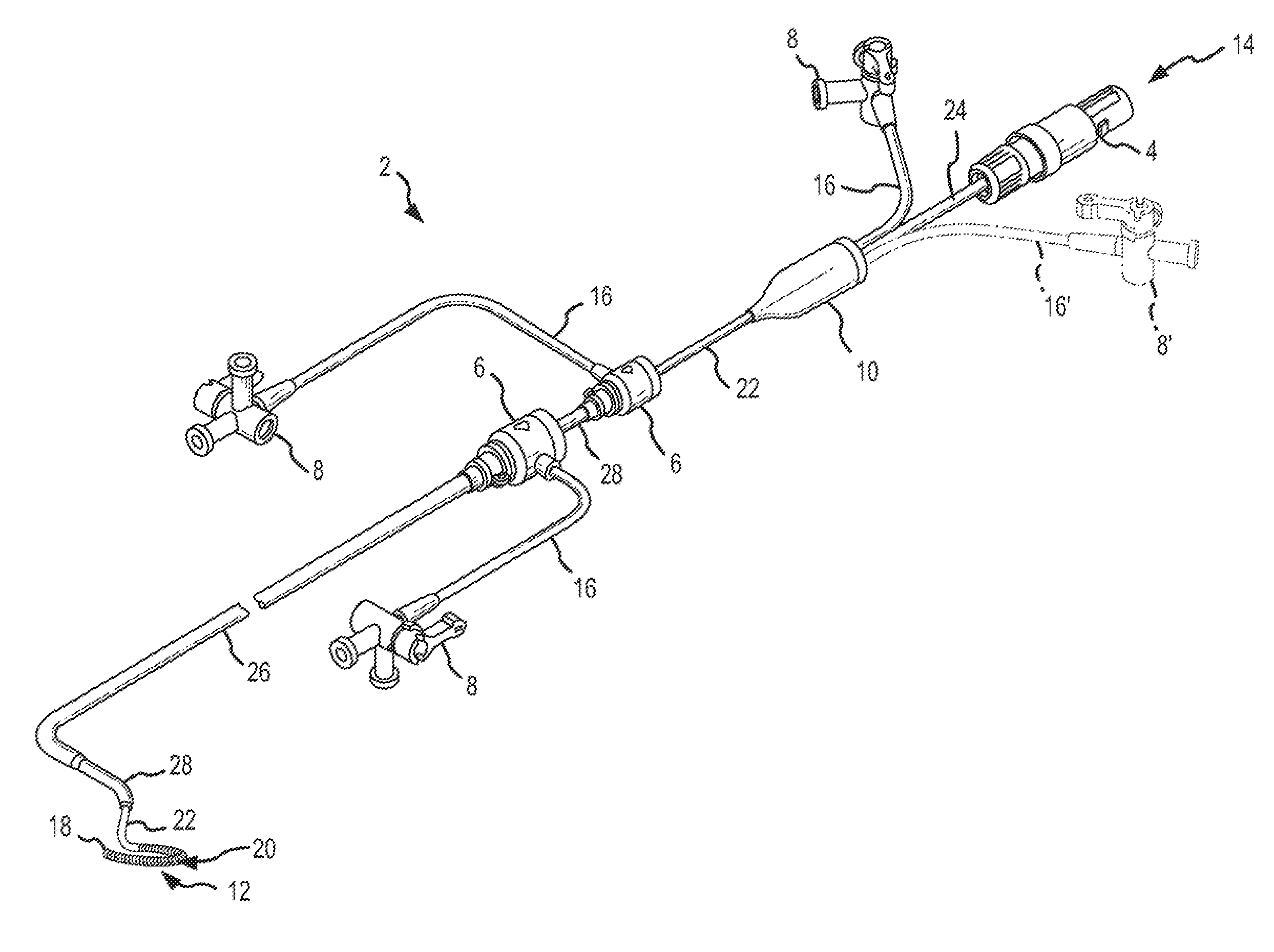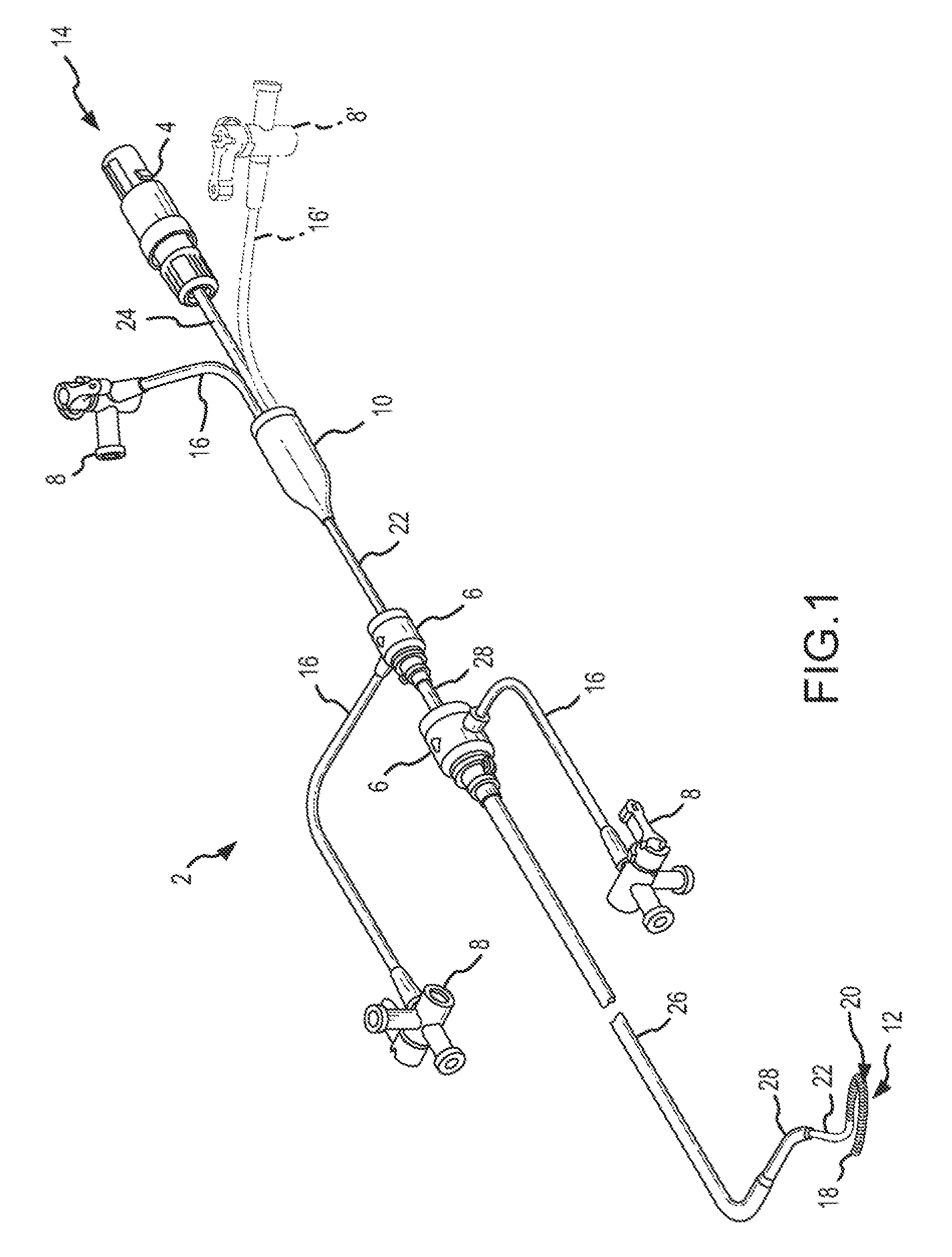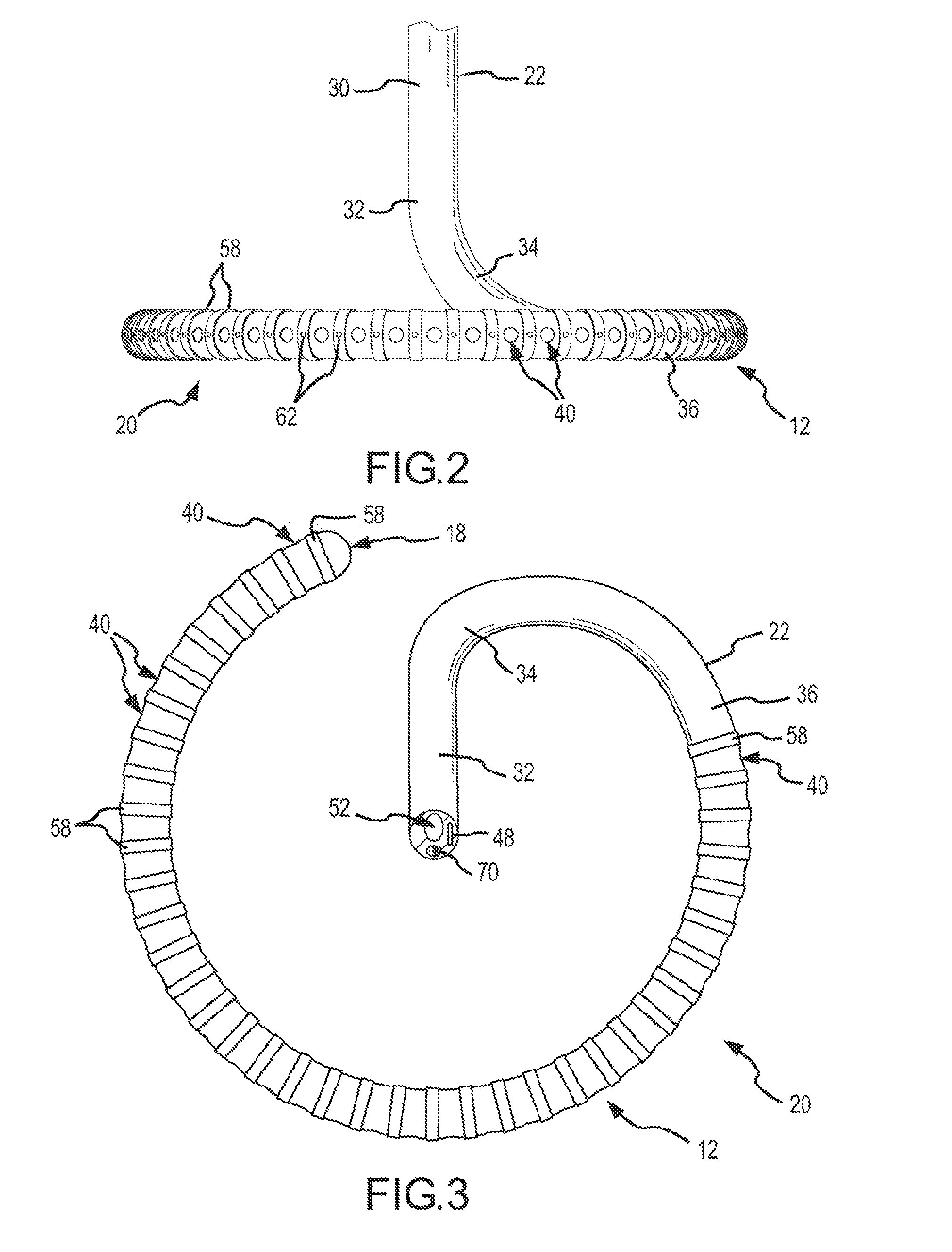Ablation Catheter With Sensor Array And Discrimination Circuit To Minimize Variation In Power Density
a technology of discrimination circuit and catheter, which is applied in the field of ablation catheter with sensor array and discrimination circuit to minimize the variation in power density, can solve the problems of increasing the vulnerability to thromboembolism, increasing the number of electrical leads and connections required, and significant patient discomfort and even death
- Summary
- Abstract
- Description
- Claims
- Application Information
AI Technical Summary
Benefits of technology
Problems solved by technology
Method used
Image
Examples
first embodiment
[0075]In addition to providing a temperature sensing array, such as for use in combination with a traditional or virtual electrode of a cardiac ablation catheter, the present invention contemplates a system for discriminating between various temperature readings of sensors in the array. The temperature discriminating system, for example, may discriminate between the sensor rings 58 described in the virtual electrode above, for example, to determine a high temperature, or to determine a low temperature. a temperature discriminator system according to the present invention, for example, is depicted in FIG. 10. In this embodiment, a temperature discriminator 80 is interposed between an array of remote thermocouple junction T1, T2, Tn temperature sensors (e.g., located in the ablation electrode section 20 described above) and a temperature feedback input 85 of a radio frequency generator 84. A plurality of sensor leads 64a, 64b, 64n connect the temperature discriminator 80 to the array ...
second embodiment
[0087]a circuit 102 that may be used as a temperature discriminator 80′ for discriminating between multiple thermocouple temperature sensors is depicted in FIG. 12. The circuit discriminates between the sensors and outputs the highest temperature of all the temperatures measured at each of the thermocouple junctions T1, T2, Tn. As previously described, each of the sensor leads 64a, 64b, 64n may be formed of a copper conductor 66a, 66b, 66n (e.g., a wire, a trace on a printed circuit board, flex circuit, etc.) and a constantan conductor pair 68a, 68b, 68n having their distal ends joined together at a corresponding sensor ring 58a, 58b, 58n to create a respective thermocouple junction T1, T2, Tn. As depicted in FIG. 12, the circuit may be expanded to accommodate and discriminate between any plurality of thermocouples and their corresponding temperature inputs. The proximal ends of each of the copper conductors are connected as inputs with the temperature discriminator 80′. Each of the...
third embodiment
[0096]FIG. 13 is a schematic diagram of a circuit 118 that may be used as temperature discriminator circuit 80″ for discriminating between multiple thermocouple junctions T1, T2, Tn located at the sensor rings 58a, 58b, 58n of an ablation catheter according to the present invention. The temperature discriminator circuit 80″ includes the same discriminatory circuitry as the embodiment of the temperature discriminator 80′ shown in FIG. 12, but further comprises comparators 120a, 120b, 120n and indicators, such as light emitting diode (LED) indicators 122a, 122b, 122n, that may be used to provide feedback to an operator of the ablation catheter. Where the components are the same, those components are labeled with the same reference numbers shown in FIG. 12 and are not described further. The indicators may, for example, provide a visual indication showing which thermocouple temperature sensor is the hottest (or coldest). Alternatively, the indicators may provide an indication of which t...
PUM
 Login to View More
Login to View More Abstract
Description
Claims
Application Information
 Login to View More
Login to View More - R&D
- Intellectual Property
- Life Sciences
- Materials
- Tech Scout
- Unparalleled Data Quality
- Higher Quality Content
- 60% Fewer Hallucinations
Browse by: Latest US Patents, China's latest patents, Technical Efficacy Thesaurus, Application Domain, Technology Topic, Popular Technical Reports.
© 2025 PatSnap. All rights reserved.Legal|Privacy policy|Modern Slavery Act Transparency Statement|Sitemap|About US| Contact US: help@patsnap.com



